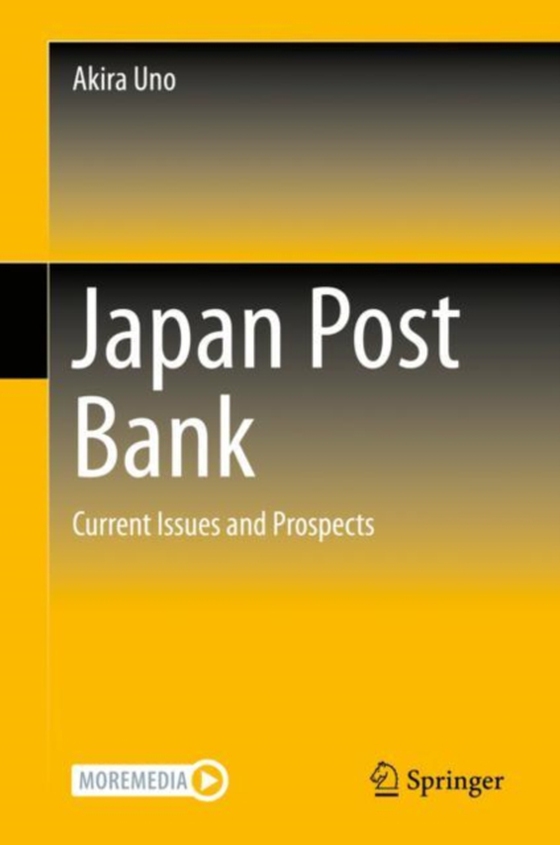
Japan Post Bank e-bog
1021,49 DKK
(inkl. moms 1276,86 DKK)
This book provides a comprehensive view on how regional financial institutions should be operated in order to restore Japan's fiscal health. It points out that, even though the Japan Post Bank has been partially privatized, the old mandatory deposit system still virtually exists between the bank and the government. This makes the bank's asset portfolio heavily weighted toward Japanese governmen...
E-bog
1021,49 DKK
Forlag
Springer
Udgivet
9 juli 2020
Genrer
Behavioural economics
Sprog
English
Format
pdf
Beskyttelse
LCP
ISBN
9789811514081
This book provides a comprehensive view on how regional financial institutions should be operated in order to restore Japan's fiscal health. It points out that, even though the Japan Post Bank has been partially privatized, the old mandatory deposit system still virtually exists between the bank and the government. This makes the bank's asset portfolio heavily weighted toward Japanese government bonds and creates a bottleneck to restoring fiscal health. The book also demonstrates how this system and the low interest rate policy keep the bank's return on assets (ROA) low and expose the bank to an interest rate risk and credit risk. While shedding light on the true nature of these problems, this work looks into the best ways regional financial institutions can be operated for the sake of regional economic revitalization. The process would involve integrating the three privatized public financial institutions (i.e., the Japan Post Bank, the Shoko Chukin Bank, and the Development Bank of Japan) and splitting their operations into different businesses and regional companies as well as reorganizing more than 100 regional banks. The author analyzes total assets and ROA of different types of financial institutions (public and private financial services) in Japan to obtain an overall view. Then, using ROA as an assessment indicator, he looks into ways to optimize their portfolios to make the most of individual financial assets, especially deposits, from a welfare economics point of view and formulates a theory for optimization. Financial institutions can optimize their ROA by using individual deposits and savings for total optimization to maximize their return on investment. If the share of total assets by type of financial institution is optimized through mergers or vertical integration between different types of financial institutions, and if ROA is optimized overall as a result, the structure of financial institutions by type in Japan can be optimized.
 Dansk
Dansk

